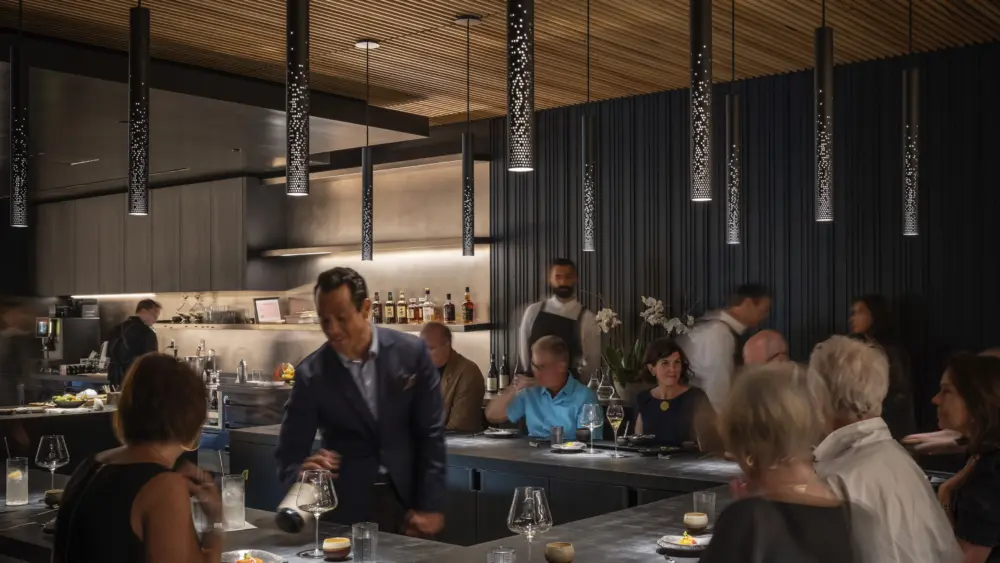The notion of establishing a wine import business has no doubt crossed the minds of many who’ve had the opportunity to travel and taste wine in foreign places. Who wouldn’t want to share the fabulous tastes of the world with the educated palates of our region? But successfully and legally operating as an importer requires more than scouting a few wine gems—it also requires compliance with state and federal laws and the issuance of the proper wine licenses.
For the unwary, the state application process can easily become overwhelming. Enlisting the services of a compliance specialist or wine consultant to navigate through the forms and properly input the required information is an option that can streamline the process and prevent delays in licensing. But the best starting point for a potential importer is an understanding of how the various wine licenses that are issued by the California Alcoholic Beverage Control (ABC) can dovetail with the importer’s business plan.
What follows is an overview of the licenses, and combination of licenses, that are applicable to importers:
Single licenses
09. A common license held by California importers, the 09 is one of two licenses that govern the importation of wine to the United States. The 09 license lets an importer take possession1 of the imported wine as it enters the country and after it clears customs2. Note that a 09 license cannot stand alone, but must be held in tandem with either a type 17 or 20 license, both of which are discussed later in this article.
10. Alternatively, an importer can hold a Wine and Beer Importer’s General license, which lets an importer bring wine into the United States with a goal of selling to wholesalers and distributors. Possession of this license can be a key factor in the establishment of a major wine importing business, but a type 10 license also cannot stand alone.
17. One of the most versatile licenses, the type 17 is most commonly paired with a 09, 10 or 20 license. The type 17 authorizes a person or entity to act as a wholesaler and sell wine directly to retailers, thereby eliminating the need to locate another wholesaler.
20. This is a stand-alone license held under the restrictions of the licensing moratorium imposed upon many California counties. When paired with a type 17 license, the ABC lifts the moratorium, and adds significant conditions. Classically, this license is issued for Beer and Wine Off-Sale. With this license, however, a California-based (and properly licensed) wholesaler or importer can legally sell wine directly to California consumers. But, because possession of a wholesaler’s license impedes one’s ability to conduct face-to-face wine transactions with consumers, a wholesaler cannot take possession of the product and must make all sales through the Internet or by telephone. Additionally, the wine must be delivered to the California consumer via common carrier and directly from the licensed warehouse.
Combinations
Importers should realize they can effectively combine licenses to achieve desired results.
17/20. This classic, custom crush combination allows the wholesaling of wine and delivery of the product by common carrier. Moreover, it allows sales to be made to retailers and other properly licensed wholesalers who sell to consumers. With this license, most sales must be made to California retailers. Also, the restriction on selling directly to California consumers kicks in, which means each sale must be followed by or preceded by a sale to a licensed retailer or wholesaler in the state of California within a 45-day period.
09/17/20. This is a common licensing strategy for smaller importers. The 09 portion allows the product to be imported into the state or country. The 17/20 combination works in the same way for importers as it does for custom crushers and wholesalers. The addition of the 09 license allows importers to sell wine obtained from overseas. Again, with this license, most sales must be with licensed California retailers, such as grocery stores, wine bars and restaurants.
10/17/20. The Importer General’s License (type 10) in combination with the 17/20 can be the ticket to the greatest number of privileges relevant to wine importation. Next to holding a 02-Winegrower’s permit, this licensing strategy offers the most avenues for wine transactions. With an Importer General’s Permit, the importer can sell the majority of its wine imports directly to other wholesalers and distributors. Also, with the type 17 license, selling directly to retailers is a viable option. Finally, the type 20 allows for conditional sales to California consumers (same conditions as with the 17/20 and 09/17/20 combinations) and also to California licensed wholesalers.
Go for it
For would-be importers, gaining a bit of knowledge about the necessary licenses is the first step. Deciding to go the licensing application route on one’s own is doable, since the staff members of the California Alcohol Beverage Control Boards are friendly and happy to accept appointments and to guide applicants through the process. For more information, visit the ABC website to find the district office governing your county.
1 “Taking possession” of the wine for the purposes of ABC requires further responsibility of the wholesaler, as all wine held “in possession” of licensed wholesalers may not actually be in their possession. It remains under their control, but since wholesalers aren’t allowed to store wine without additional licensing, this often results in the necessity to employ the services of a warehouse.
2 The holder of a type 09 or a type 10 license cannot access wine at customs. Instead, a licensed customs broker must perform this task. Many customs brokers charge reasonable fees for their services and can arrange for the initial transportation of the wine product from the customs docks to the importer’s warehouse or storage facility. A customs broker is licensed with an ABC type 15 permit.
Charlotte Billings is a trade compliance analyst based in Napa.



